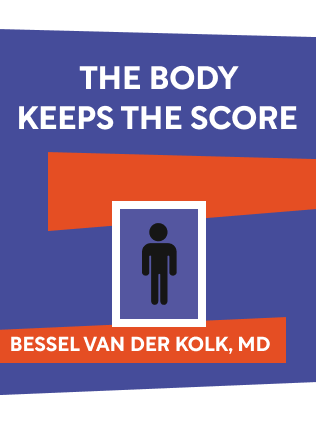

This article is an excerpt from the Shortform book guide to "The Body Keeps The Score" by Bessel van der Kolk. Shortform has the world's best summaries and analyses of books you should be reading.
Like this article? Sign up for a free trial here .
How does diagnosing PTSD work? Are there specific symptoms or methods for diagnosing different types of PTSD?
Diagnosing PTSD can be challenging because people can have different symptoms. But with proper treatment, diagnosing PTSD is possible and necessary for victims of trauma.
Read more about diagnosing PTSD and how it works.
Diagnosing PTSD
Before 1980, the symptoms of PTSD were described and diagnosed separately — as depression, mood disorders, alcoholism, substance abuse, and schizophrenia. A turning point came when a group of Vietnam veterans and psychoanalysts Chaim Shatan and Robert J. Lifton lobbied the American Psychiatric Association to create a diagnosis called posttraumatic stress disorder, which included a cluster of symptoms.
PTSD is defined as the result of a horrendous event involving death, serious injury — or the threat of either — to the patient or someone else, causing intense feelings of fear and helplessness. Symptoms of PTSD include flashbacks; nightmares; avoidance of people, places, or thoughts connected to the trauma; and hyperarousal, including hypervigilance, insomnia, and irritability. Diagnosing PTSD includes these symptoms.
Once the post traumatic stress disorder diagnosis was created, this opened the door for new research, understanding, and approaches to treatment.
Soon after, in 1982, van der Kolk started working at the Massachusetts Health Center, a Harvard teaching hospital. While working there, he encountered dozens of female patients who had been sexually abused as children.
At the time, psychiatry textbooks stated that incest was not only extremely rare in the United States, but also that it “diminishes the subject’s chance of psychosis and allows for a better adjustment to the external world” — the textbooks were saying that assault survivors were not only unharmed, but better able to cope in the world. In sharp contrast, van der Kolk found the opposite to be true: His patients suffered nightmares and flashbacks, intense rage, periods of emotional collapse, and difficulty maintaining meaningful relationships.
These patients reminded van der Kolk of the veterans he had worked with previously, and he realized that trauma could be caused by much more than battlefield tragedies. Violent crimes, rape, and abuse could bring on many of the the same symptoms of PTSD visible in veterans — and for child victims who experience these traumas in their homes, the source of their suffering is not a foreign enemy but their caretakers.
PTSD in Sexual Assault Survivors
More than half of psychiatric patients have experienced childhood sexual assault, abandonment, neglect, or rape, or witnessed domestic physical abuse. But in decades past, psychologists and psychiatrists focused more of their attention on managing the issues that resulted from sexual trauma — including suicidal thoughts and self-destructive behavior — rather than getting to the root causes of their despair. This is indicative of the need for a post traumatic stress disorder diagnosis.
In fact, a 1911 textbook by Eugen Blueler titled Demetia Praecox states, “Among schizophrenic body hallucinations, the sexual ones are by far the most frequent and the most important.” Psychiatrists viewed sexual hallucinations as a common symptom of schizophrenia, instead of considering that these hallucinations could actually stem from memories of trauma that may have triggered the schizophrenia (as it was diagnosed, though many trauma sufferers were diagnosed with schizophrenia before PTSD was defined). This information was later helpful in diagnosing PTSD.
When the author worked at the Massachusetts Mental Health Center in the late 1960s, he noticed other characteristics common among the schizophrenic patients:
- Violent, self-destructive behavior in response to feeling frustrated or misunderstood
- Collapsing in temper tantrums, throwing objects, and cutting themselves
- Clumsy and physically uncoordinated
- Seeming awkward and unnatural, and not showing normal gestures and nonverbal communication during relaxed, casual conversations
As van der Kolk later learned more about the physical effects of trauma, he considered that the explanation for these physical characteristics and a possible post traumatic stress disorder diagnosis.
Diagnosing PTSD can be a challenge, but psychiatrists are working to define symptoms clearly and develop treatments.

———End of Preview———
Like what you just read? Read the rest of the world's best book summary and analysis of Bessel van der Kolk's "The Body Keeps The Score" at Shortform .
Here's what you'll find in our full The Body Keeps The Score summary :
- How your past trauma might change your brain and body
- What you can do to help your brain and body heal
- Why some trauma survivors can't recognize themselves in the mirror






